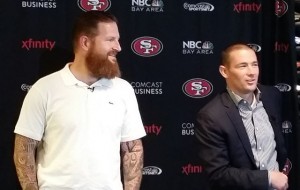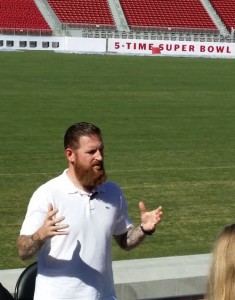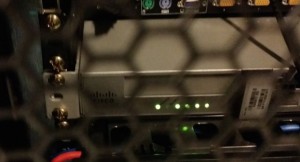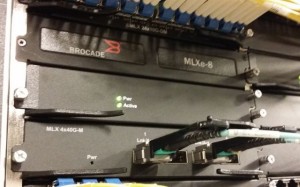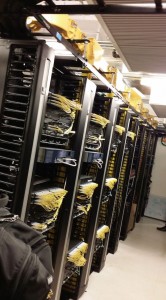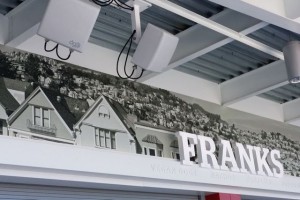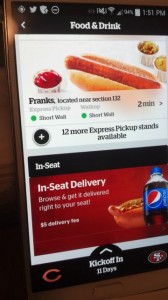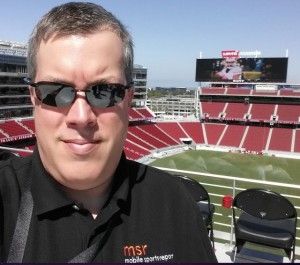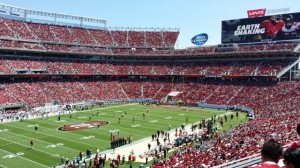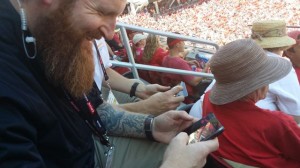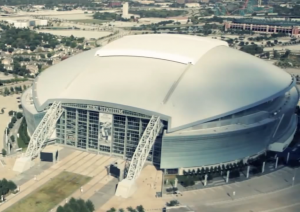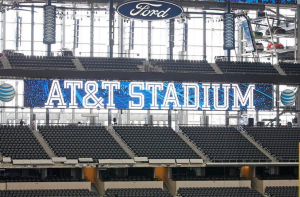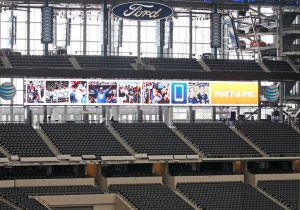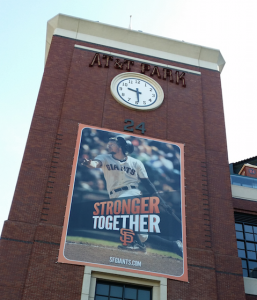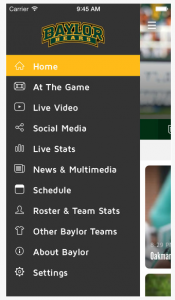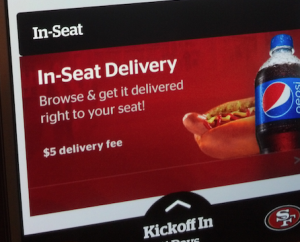
Screen grab from Levi’s Stadium app showing in-seat food delivery option. Credit all photos: Paul Kapustka, Mobile Sports Report.
At a Levi’s media technology tour Wednesday, the Niners’ tech staff provided an in-depth and up-close look at some of the new stadium’s network infrastructure, including a quick glimpse of one of the several data-center rooms. Dan Williams, vice president of technology for the Niners, said that at the first preseason game at Levi’s on Aug. 17, more fans used the “express pickup” service to order food that they could then pick up at concession stand windows than the seat-delivery feature. But at the second game against the San Diego Chargers, more fans went for the in-seat option, perhaps a sign that Niners fans are learning and testing the new stadium services as they go.
“It’s going to be an ongoing education process,” said Martin Manville, business operations analyst for the Niners and one of the key tech leaders on the Levi’s app team. Manville said the Niners had learned a lot about food delivery in test situations at Candlestick Park last season — and some of those lessons are now evident in the Levi’s delivery menu, which is stripped down to ensure the food runners can get grub to fans before it gets cold (or warm, in the case of cold beverages). According to Manville the average delivery time at the Aug. 24 game was between 10 and 12 minutes, but the team expects that “normal” delays during the regular season will be closer to 15 to 20 minutes per order.
Still, that’s not a bad option if you don’t want to leave your seat and you don’t mind the extra $5 delivery charge. One early interesting stat from the food-delivery process is that the Niners found more orders coming from the “cheap seats” in the north and south stands at Levi’s than from the 50-yard-line seats where the high rollers sit. According to Manville, since the fans in the club seats have easy access to numerous uncrowded concession stands they may not see the need for the in-seat options.
Wi-Fi APs: 600 in Levi’s bowl seating
Some other news nuggets from the tech tour day: According to Williams, of the 1,200 Wi-Fi access points at Levi’s, 600 of those are distributed in the seating areas (aka “the bowl”), with the other 600 placed in suites, concourses and other stadium areas. Williams said the Aruba Networks Wi-Fi antennas are basically split into three types — regular enterprise-type APs for suite and office areas, regular outdoor APs for concourse areas, and more specialized versions (including the under-seat APs) for bowl placements.— For the app itself, the Niners said that there have been 80,000 downloads so far, with almost half of the season ticket holders having put their ticketing information into the app. The “NiNerds,” the geek-dressed help squad that provides fans with personal assistance with the app, is now at about 50 or 60 strong at each event (originally the team had said it wanted to hire 150 such Wi-Fi coaches). The Niners said the NiNerds will be doing more pro-active app education going forward, doing things like approaching fans in concession lines to see if they know about the express line or in-seat ordering options.
— Though Comcast’s 10-year deal with the Niners calls for the cable provider to bring in two 10-gigabit backbone pipes, the Niners are often quoted as saying they have 40 GB of backbone bandwidth. We solved this mystery today: According to Comcast, the other two 10-GB pipes are a redundant channel from another (unnamed) provider. So: the stadium does have four 10 GB bandwidth pipes, by far the most capacity in any stadium we’ve heard of.
— More traffic stats: Though we will break these down in a separate post, the Niners said that for the Aug. 24 game fans used 1.96 Terabytes of Wi-Fi traffic, just a bit lower than the 2.13 TB used at the first preseason game on Aug. 17. The team also provided some DAS stats, claiming fans used another 1.02 TB of cellular data at the two preseason games combined.
Tech tour photos follow… including a sighting of some (shhhh!) Cisco equipment in the data center racks… click on photos for larger images.

